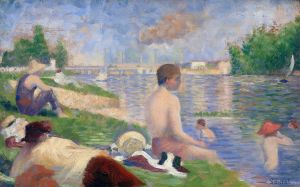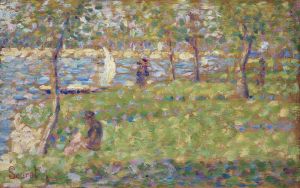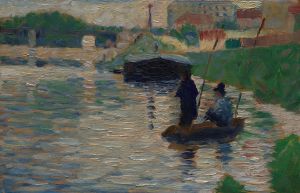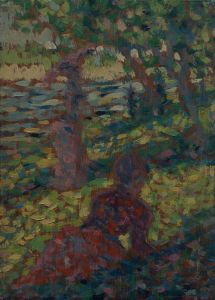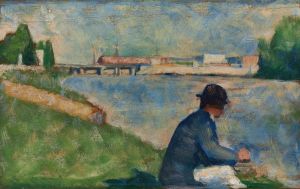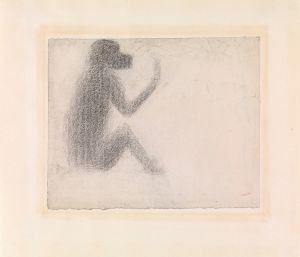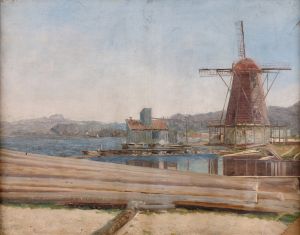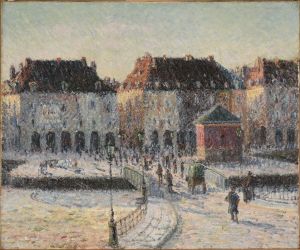
The Channel at Gravelines, Evening
A hand-painted replica of Georges Seurat’s masterpiece The Channel at Gravelines, Evening, meticulously crafted by professional artists to capture the true essence of the original. Each piece is created with museum-quality canvas and rare mineral pigments, carefully painted by experienced artists with delicate brushstrokes and rich, layered colors to perfectly recreate the texture of the original artwork. Unlike machine-printed reproductions, this hand-painted version brings the painting to life, infused with the artist’s emotions and skill in every stroke. Whether for personal collection or home decoration, it instantly elevates the artistic atmosphere of any space.
"The Channel at Gravelines, Evening" is an oil painting by the French post-impressionist artist Georges Seurat. Completed in 1890, this work is a notable example of Seurat's innovative technique known as Pointillism, a method of painting in which small, distinct dots of color are applied in patterns to form an image. Seurat is renowned for his meticulous approach to color and light, and this painting exemplifies his scientific method of color theory.
Georges Seurat was born on December 2, 1859, in Paris, France. He studied at the École des Beaux-Arts in Paris and was influenced by the works of the Impressionists, although he sought to bring a more structured and scientific approach to painting. Seurat's interest in color theory and optical effects led him to develop Pointillism, which he used to create vibrant and luminous compositions.
"The Channel at Gravelines, Evening" depicts a serene scene of the harbor at Gravelines, a small town in northern France near the Belgian border. The painting captures the tranquil atmosphere of the evening with a calm sea and a clear sky. The use of Pointillism in this work creates a shimmering effect, as the small dots of color blend in the viewer's eye to produce a harmonious and balanced composition.
Seurat's choice of subject matter reflects his interest in capturing everyday scenes and landscapes with a sense of timelessness and tranquility. The painting is characterized by its precise and methodical application of paint, with each dot carefully placed to achieve the desired effect. The cool color palette, dominated by blues and purples, enhances the sense of calm and quietude in the scene.
"The Channel at Gravelines, Evening" is part of a series of works that Seurat created depicting the coastal town of Gravelines. These paintings are considered some of his finest works, showcasing his mastery of Pointillism and his ability to convey mood and atmosphere through color and composition. The series includes other notable works such as "The Channel at Gravelines, Grand Fort-Philippe" and "The Channel at Gravelines, Petit Fort-Philippe."
Seurat's innovative techniques and his contributions to the development of modern art have had a lasting impact on the art world. His work laid the foundation for the Neo-Impressionist movement and influenced subsequent generations of artists. "The Channel at Gravelines, Evening" remains an important example of Seurat's artistic vision and his dedication to exploring the scientific principles of color and light.
Today, "The Channel at Gravelines, Evening" is held in the collection of the Museum of Modern Art (MoMA) in New York City. It continues to be admired for its technical precision, its serene beauty, and its significance in the history of art. Seurat's legacy as a pioneer of Pointillism and a master of color theory endures, and his works continue to inspire and captivate audiences around the world.









